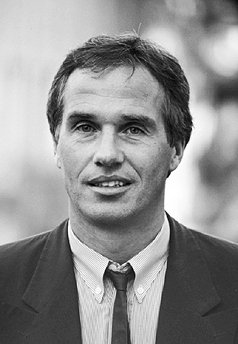The recent appointment of a prominent condensed-matter physicist to head DESY, one of the world’s leading particle accelerator centers, represents not only a pivotal moment for the institution but also underscores the growing interconnectedness of various fields of physics. This article delves into the significance of this transition, exploring the relationship between condensed matter physics and the broader domains of particle physics, astrophysics, and materials science.
Condensed matter physics grapples with the properties and behaviors of solid and liquid phases of matter, encompassing a diverse range of phenomena from superconductivity to magnetism. The nuances of these phenomena have profound implications, influencing technologies that underpin modern life—from semiconductors that power our devices to the intricate workings of nuclear magnetic resonance in medical imaging. Thus, the expertise of a condensed-matter physicist at the helm of DESY offers a unique vantage point to meld theoretical insights with practical applications.
One of the most intriguing aspects of this leadership change is the potential for cross-disciplinary innovation. Condensed matter physicists are adept at utilizing advanced mathematical frameworks and experimental techniques that could be transformative in the realm of particle physics, a field that studies the fundamental constituents of matter and the forces that govern their interactions. The operational environment of DESY—dominated by particle accelerators such as the European Synchrotron Radiation Facility—demands an expansive understanding of material behavior under extreme conditions, where the knowledge of condensed matter physics can be invaluable.
Transitioning from the implications of individual particles to the collective behaviors emerging in solid states raises several pertinent questions. For instance, how might insights from the quantum properties of materials inform our understanding of particle interactions? The appointment could herald a new era wherein research initiatives are launched to explore novel states of matter—such as topological insulators or quasicrystals—that may serve as possible platforms for high-energy particle experiments.
Moreover, the role of a condensed matter physicist in leading DESY may invigorate the discourse surrounding fundamental research into dark matter and dark energy. The properties of these elusive constituents of the universe remain poorly understood. Drawing parallels from condensed matter physics, where complex interactions of particles lead to emergent phenomena, researchers may develop innovative methodologies to better detect and delineate these cosmic enigmas.
As DESY embarks on this new chapter, it is also noteworthy to consider the technological advancements that could emerge from such interdisciplinary leadership. Condensed matter physicists continuously drive progress in nanotechnology and materials characterization—fields that are crucial in the design of sophisticated experimental apparatus used at large-scale facilities like DESY. The confluence of high-energy physics with cutting-edge materials science has the potential to yield breakthroughs in accelerator technologies, detection methods, and experimental setups.
A particularly salient aspect of this new leadership is the emphasis on collaborative research initiatives. By bringing together experts from various domains—be it high-energy particle physics, astrophysics, or materials engineering—the newly appointed physicist can foster a culture of synergy that transcends the traditional boundaries of these disciplines. This collaborative ethos will be instrumental in addressing grand challenges, such as harnessing sustainable energy sources or deciphering the universe’s fundamental mysteries.
In conjunction with the anticipated advancements in research and technology, enhanced educational outreach and public engagement will also be a vital component of DESY’s future. Under the fresh leadership, efforts to demystify complex physical concepts and promote scientific literacy could spur increased interest in STEM fields among younger generations. This is especially pertinent in an age where misconceptions about scientific principles abound. By showcasing the implications of condensed matter physics in understanding universal phenomena, a wider appreciation for the discipline can be cultivated.
Furthermore, the transition symbolizes a broader trend within the scientific community, where leaders with interdisciplinary expertise are increasingly recognized for their ability to bridge gaps between divergent fields. The nuances of complex scientific challenges necessitate a multifaceted approach; thus, leaders who can synthesize knowledge across domains will be pivotal in steering research directions. This charge to intertwine disparate strands of inquiry could usher in a renaissance of discovery that benefits both academia and industry.
Finally, it is imperative to acknowledge that leading an institution like DESY is not without its challenges. Navigating funding landscapes, fostering international collaborations, and addressing the ethical implications of scientific research require deft leadership and vision. The incoming physicist must balance innovation with a steadfast commitment to scientific integrity while also confronting pressing societal questions that arise from advancements in physics.
In summary, the appointment of a condensed matter physicist to lead DESY signifies a strategic intersection of two vital realms of physics—condensed matter and particle physics. As research initiatives evolve and collaborative frameworks emerge, the scientific community can anticipate innovative developments that not only push the frontiers of knowledge but also resonate through technological advancements. This transformative leadership will shape not only the future of DESY but could also reconfigure our understanding of the physical universe.








